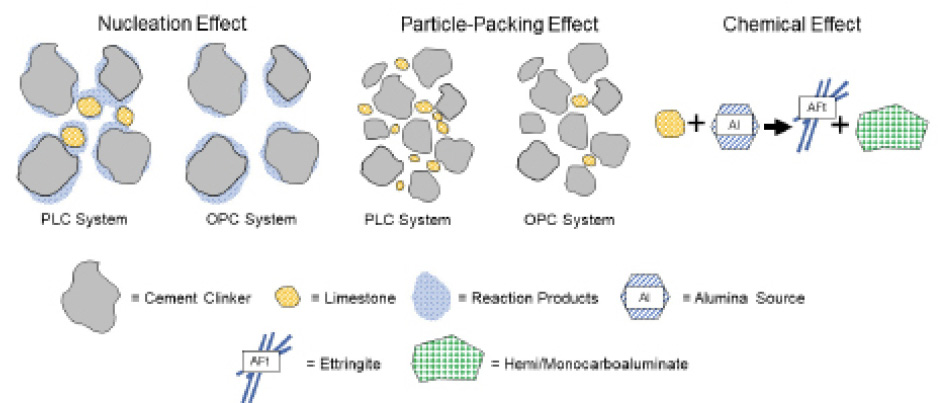
highways.dot.gov.
The Federal Highway Administration’s new TechNote on Portland Limestone Cement (FHWA-HRT-23-104) provides state highway agencies, contractors and concrete practitioners information enabling broader adoption of a blended binder to which cement plants across North America are migrating. The 12-page document reviews the history of PLC in the U.S.; chemical and physical requirements for a binder combining portland cement + 5-15 percent interground limestone, per ASTM C595/AASHTO M240 Standard Specification for Blended Hydraulic Cement; and, carbon dioxide emissions reduction attributable to PLC finishing.
TechNote authors examine the engineering principles of nucleation, particle packing and chemical effects of PLC, along with the binder’s impact on fresh and hardened concrete properties, including volume stability and durability from various research reports. They also outline potential changes to concrete performance and suggest best practices to evaluate and test PLC in mixtures. They conclude with briefs from transportation project case studies on successful use of the blended binder.
PORTLAND LIMESTONE CEMENT: MIXTURE MECHANICS


SCRAP RECYCLING VETERAN LEADS GLOBAL STEEL CLIMATE COUNCIL
The Global Steel Climate Council, Washington, D.C. has appointed Adina Renee Adler, a seasoned voice of competitive, low carbon manufacturing, as executive director. She will collaborate with producers, policymakers, and stakeholders to position the GSCC as a trailblazer for true carbon cutting through a standard that sets firm glide paths for science-based, verified greenhouse gas emissions reduction targets. She will grow the GSCC membership of steel companies committed to decarbonization and maintain the Steel Climate Standard’s alignment with the Paris Climate Agreement and International Energy Agency targets for steel industry decarbonization. The Steel Climate Standard sets carbon accounting metrics applicable to concrete reinforcing and structural steel environmental product declarations.
Adler brings years of organizational leadership in manufacturing, international trade and circular economy policy. She previously served as deputy executive director at Silverado Policy Accelerator and vice president of Advocacy at the Institute of Scrap Recycling Industries, a GSCC founding member. Her career also includes international advocacy for Shell Oil Co. and Alcoa, which followed her 10 years as a trade negotiator and advocate in the U.S. government.
“The low carbon steel industry provides the building blocks for green manufacturing,” says Adler. “I am honored to lead the GSCC and work closely with the Board, members and partners to accelerate the industry’s greenhouse gas reductions to achieving a 1.5 degree Celsius scenario by 2050.”
“We are fortunate to have Adina at a critical time in our industry’s decarbonization journey,” adds GSCC Board Chair Gregory Murphy (Nucor Corp.). “She is well respected in the international policy community and brings valuable experience, energy and policy ingenuity to our growing coalition.”